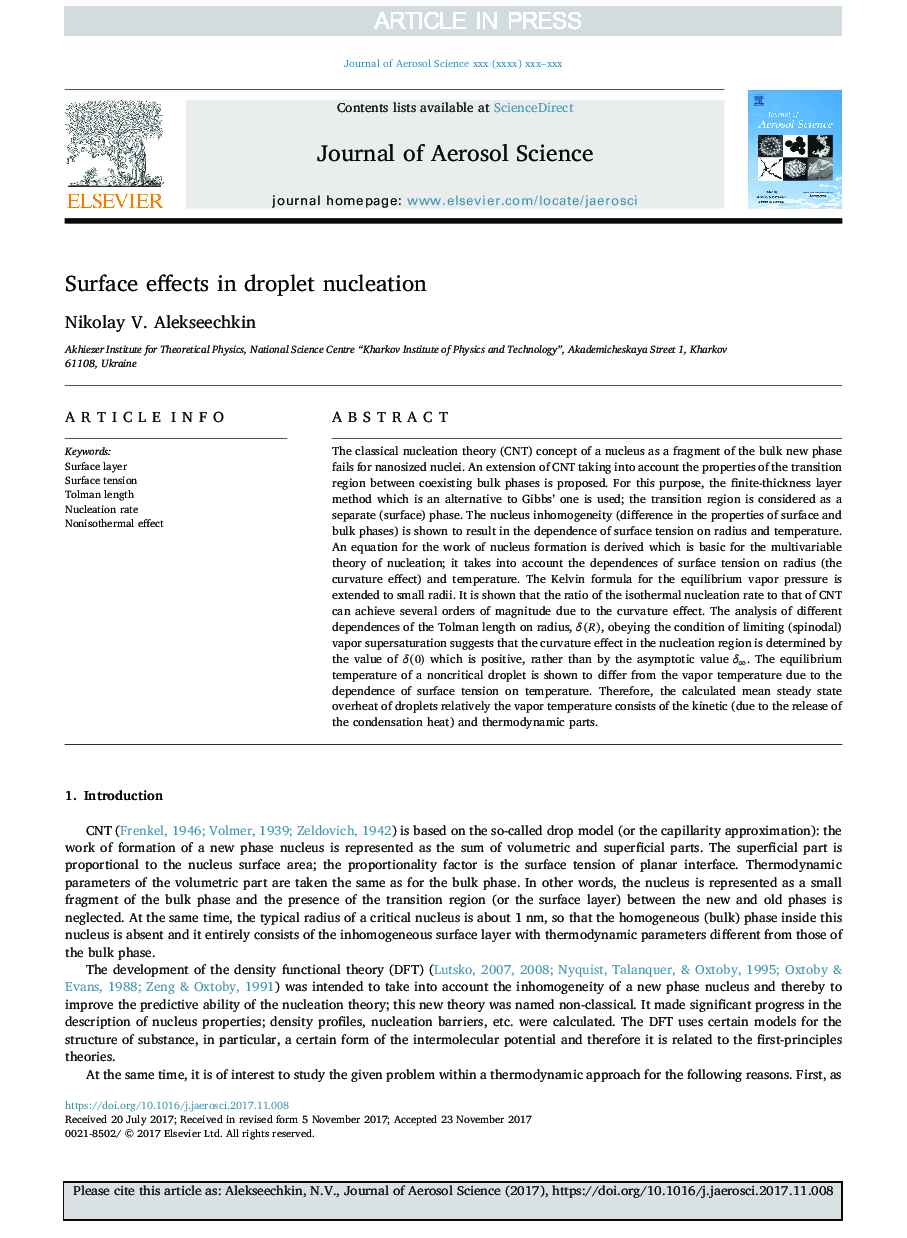| Article ID | Journal | Published Year | Pages | File Type |
|---|---|---|---|---|
| 8865309 | Journal of Aerosol Science | 2018 | 24 Pages |
Abstract
The classical nucleation theory (CNT) concept of a nucleus as a fragment of the bulk new phase fails for nanosized nuclei. An extension of CNT taking into account the properties of the transition region between coexisting bulk phases is proposed. For this purpose, the finite-thickness layer method which is an alternative to Gibbs' one is used; the transition region is considered as a separate (surface) phase. The nucleus inhomogeneity (difference in the properties of surface and bulk phases) is shown to result in the dependence of surface tension on radius and temperature. An equation for the work of nucleus formation is derived which is basic for the multivariable theory of nucleation; it takes into account the dependences of surface tension on radius (the curvature effect) and temperature. The Kelvin formula for the equilibrium vapor pressure is extended to small radii. It is shown that the ratio of the isothermal nucleation rate to that of CNT can achieve several orders of magnitude due to the curvature effect. The analysis of different dependences of the Tolman length on radius, δ(R), obeying the condition of limiting (spinodal) vapor supersaturation suggests that the curvature effect in the nucleation region is determined by the value of δ(0) which is positive, rather than by the asymptotic value δâ. The equilibrium temperature of a noncritical droplet is shown to differ from the vapor temperature due to the dependence of surface tension on temperature. Therefore, the calculated mean steady state overheat of droplets relatively the vapor temperature consists of the kinetic (due to the release of the condensation heat) and thermodynamic parts.
Related Topics
Physical Sciences and Engineering
Earth and Planetary Sciences
Atmospheric Science
Authors
Nikolay V. Alekseechkin,
